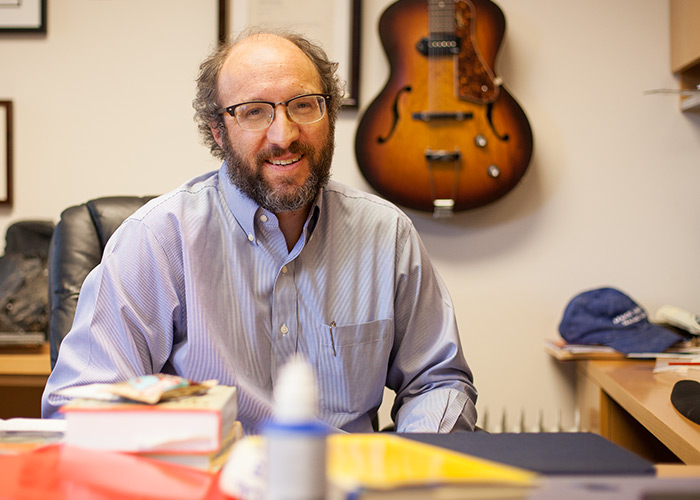Experimental Results Verify Predictions
One of the goals of chemistry is to manipulate a chemical reaction toward a desired outcome.
In a continuation of this goal, Eric Bittner, John and Rebecca Moores Professor of Chemical Physics at the University of Houston, has optimized the use of an algorithm that identifies which electronic configurations can drive a specific reaction.
 Eric Bittner, John and Rebecca Moores Professor of Chemical Physics, has optimized
the use of an algorithm for predicting which electronic configurations can drive a
specific reaction.In a recent paper published in the journal Nature Communications, Bittner and his
collaborators, describe the use of this algorithm, along with experimental evidence
verifying the predictions.
Eric Bittner, John and Rebecca Moores Professor of Chemical Physics, has optimized
the use of an algorithm for predicting which electronic configurations can drive a
specific reaction.In a recent paper published in the journal Nature Communications, Bittner and his
collaborators, describe the use of this algorithm, along with experimental evidence
verifying the predictions.
“This search algorithm is similar to what Netflix uses to suggest which movie to watch, or what Google uses to find the best answer to your search term,” Bittner said. “This algorithm will make a guess, then refine the guess, then make an even better guess, until it arrives at the optimal recommendation.”
Vibrational Frequencies of Molecules
Any chemical reaction has two states, which are the configurations of a molecule before and after a reaction. Each state is a unique configuration of atomic arrangements and chemical bonds that define the molecular properties. Bridging these two states is the electronic transition state, where an electron shifts from one location to another, with atoms following in its wake.
“Chemical bonds are like springs, which can be collective over the entire molecule,” Bittner said. “What happens is that certain vibrational frequencies are more strongly coupled to an electronic transition than others.”
These vibrations of the molecule can be thought of as analogous to what happens when you pluck a guitar. Plucking the string produces a fundamental pitch, which is the main note creating the harmony, as well as a series of harmonic overtones.
These overtones are unique to each instrument, giving each one its distinctive sound. For example, these overtones are responsible for the smooth, rich sound of Jimmy Page playing a Gibson Les Paul versus the bright, brassy notes of Keith Richards playing a Fender Telecaster.
Transitions Accompanied by Specific Vibrations
Using this musical analogy, different electronic transitions have a particular tonal quality, which contains both an overall frequency that is the summation of the entire molecule, as well as the corresponding harmonic frequencies from individual bonds.
“Certain electronic transitions are always accompanied by very specific types of vibration motions in the molecules,” said Bittner, who is in the Department of Chemistry in the College of Natural Sciences and Mathematics.
The algorithm allows you to identify the unique tonal characteristic of a specific transition, then predict how a targeted ultrashort laser pulse can preferentially shift the molecule toward one particular transition.
“We were trying to answer two questions,” Bittner said. “First, is our model consistent with the idea that you can control electron transfer pathways by identifying the optimal motions? Second, if you increase the energetic populations of these modes, can you accelerate or decelerate certain relaxation pathways within the molecule?”
Calculating Possible Configurations
Using a high-performance computer at UH, Bittner and his research team used this algorithm to calculate the possible electronic configurations of a specific donor-bridge-acceptor molecule that his collaborators were studying.
For this molecule, the goal was to shift an electron from the donor region to the acceptor using an ultrafast pulse of laser light. The big question was which vibrational mode, at which bond, would accomplish this desired reaction.
This is not your average Google search query. These calculations, which looked at the molecule in hundreds of different dimensions, took the high-performance computer nine months.
Once these calculations were complete, collaborators at the University of Sheffield tested out these predictions, discovering that the recommendation generated by this algorithm was indeed, correct.
Your Netflix night awaits. Just add popcorn, with a dash of theoretical chemistry for flavor.
This research was supported by grants from the National Science Foundation and the Robert A. Welch Foundation.
- Rachel Fairbank, College of Natural Sciences and Mathematics